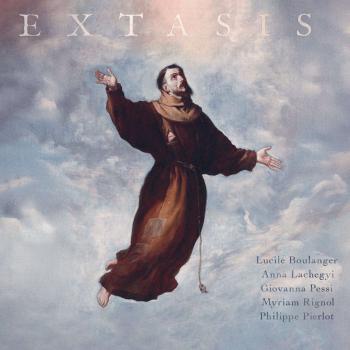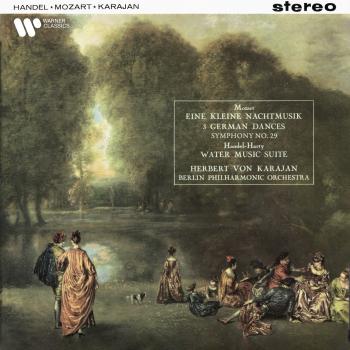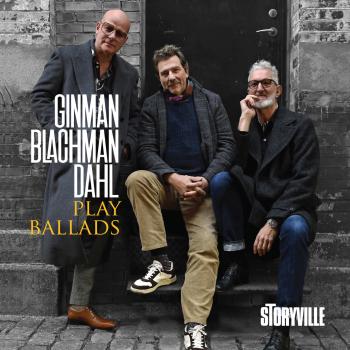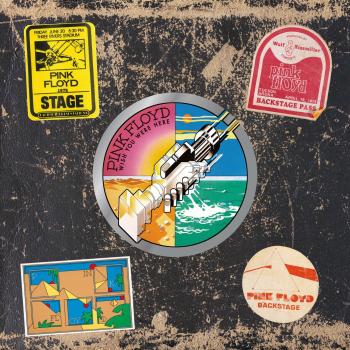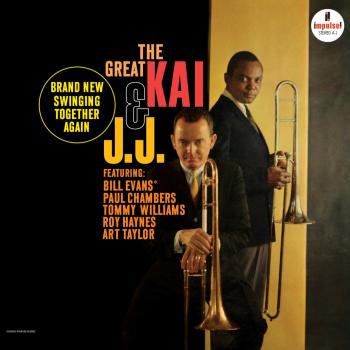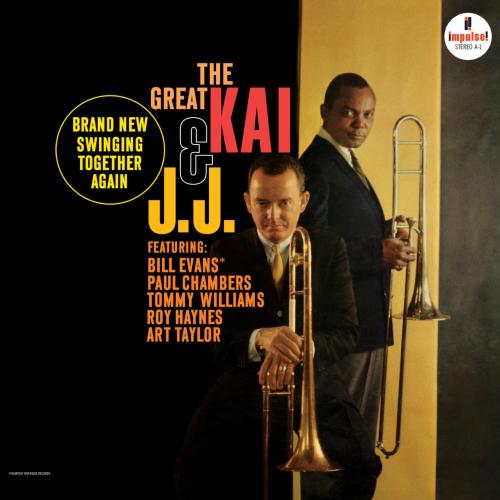
The Great Kai & J. J. (2025 Remaster) Kai Winding & J.J. Johnson
Album Info
Album Veröffentlichung:
1961
HRA-Veröffentlichung:
21.02.2025
Das Album enthält Albumcover
Entschuldigen Sie bitte!
Sehr geehrter HIGHRESAUDIO Besucher,
leider kann das Album zurzeit aufgrund von Länder- und Lizenzbeschränkungen nicht gekauft werden oder uns liegt der offizielle Veröffentlichungstermin für Ihr Land noch nicht vor. Wir aktualisieren unsere Veröffentlichungstermine ein- bis zweimal die Woche. Bitte schauen Sie ab und zu mal wieder rein.
Wir empfehlen Ihnen das Album auf Ihre Merkliste zu setzen.
Wir bedanken uns für Ihr Verständnis und Ihre Geduld.
Ihr, HIGHRESAUDIO
- 1 This Could Be The Start Of Something Big (2025 Remaster) 03:10
- 2 Georgia On My Mind (2025 Remaster) 03:49
- 3 Blue Monk (2025 Remaster) 04:24
- 4 Judy (2025 Remaster) 04:01
- 5 Alone Together (2025 Remaster) 03:31
- 6 Side By Side (2025 Remaster) 03:10
- 7 I Concentrate On You (2025 Remaster) 04:01
- 8 Theme From Picnic (2025 Remaster) 04:02
- 9 Trixie (2025 Remaster) 05:10
- 10 Going Going Gong (2025 Remaster) 03:08
- 11 Just For A Thrill (2025 Remaster) 03:21
Info zu The Great Kai & J. J. (2025 Remaster)
Die allererste Veröffentlichung von Impulse! Records (mit der Katalognummer A-1) gilt als eine der besten Aufnahmen von Kai Winding und J. J. Johnson. Die beiden Posaunisten hatten erstmals 1949 bei Sessions für das Album »Trombone By Three« miteinander gespielt und nahmen danach bis 1956 zusammen noch neun weitere Alben auf. Creed Taylor, der bereits 1955 ein Album der beiden für Bethlehem Records produziert hatte, stellte ihnen 1960 für »The Great Kai And J. J.« eine besonders hochkarätige Rhythmusgruppe zur Seite, mit keinem Geringeren als Bill Evans am Piano.
"Dieses lebhafte Impulse!-Set war die erste aufgezeichnete Reunion der Posaunisten J.J. Johnson und Kai Winding. Mit dem Pianisten Bill Evans, entweder Paul Chambers oder Tommy Williams am Bass und Roy Haynes oder Art Taylor am Schlagzeug sind die beiden Posaunisten bei Stücken wie "This Could Be the Start of Something Big", "Blue Monk", "Side by Side" und "Theme from Picnic" in melodischer und geistreicher Form. Empfehlenswert." (Scott Yanow, AMG)
J.J. Johnson, Posaune
Kai Winding, Posaune
Bill Evans, Klavier
Paul Chambers, Kontrabass (Tracks 1, 3, 6, 7)
Tommy Williams, Kontrabass (Tracks 2, 4, 5 & 8-11)
Art Taylor, Schlagzeug (Tracks 2, 4, 5 & 8-11)
Roy Haynes, Schlagzeug (Tracks 1, 3, 6, 7)
Aufgenommen am 3. Oktober 1960 (Track 1), 2. November 1960 (Tracks 3, 6, 7), 4. November 1960 (Tracks 5, 8, 10, 11) und 8. November 1960 (Titel 2, 4, 9), 1960 im Van Gelder Studio, Englewood Cliffs
Produziert von Creed Taylor
Digital remastered
J.J. Johnson
Considered by many to be the finest jazz trombonist of all time, J.J. Johnson transferred the innovations of Charlie Parker and Dizzy Gillespie to his instrument, playing with such speed and deceptive ease that at one time some listeners assumed he was playing valve (rather than slide) trombone. Johnson toured with the territory bands of Clarence Love and Snookum Russell during 1941-1942, and then spent 1942-1945 with Benny Carter’s big band. He made his recording debut with Carter (taking a solo on “Love for Sale” in 1943), and played at the first Jazz At The Philharmonic concert (1944). Johnson also had plenty of solo space during his stay with Count Basie’s Orchestra (1945-1946). During 1946-1950, he played with all of the top bop musicians, including Charlie Parker (with whom he recorded in 1947), the Dizzy Gillespie big band, Illinois Jacquet (1947-1949), and the Miles Davis Birth of the Cool Nonet. His own recordings from the era included such sidemen as Bud Powell and a young Sonny Rollins. Johnson, who also recorded with the Metronome All-Stars, played with Oscar Pettiford (1951) and Miles Davis (1952). Between 1953-1955 Johnson led three recording dates for Blue Note that were first released as a series of 10″ LPs, and later compiled on the two-volume 12″ LPs The Eminent Jay Jay Johnson.
In August 1954, he formed a two-trombone quintet with Kai Winding that became known as Jay and Kai and was quite popular during its two years. After Johnson and Winding went their separate ways (they would later have a few reunions), Johnson led a quintet that often included Bobby Jaspar. He began to compose ambitious works, starting with 1956’s “Poem for Brass,” and including “El Camino Real” and a feature for Dizzy Gillespie, “Perceptions”; his “Lament” became a standard. Johnson worked with Miles Davis during part of 1961-1962, led some more small groups of his own, and by the late ’60s was kept busy writing television and film scores. J.J. Johnson was so famous in the jazz world that he kept on winning Downbeat polls in the 1970s, even though he was not playing at all. However, starting with a Japanese tour in 1977, Johnson gradually returned to a busy performance schedule, leading a quintet in the 1980s that often featured Ralph Moore, and in the mid-’90s remained at the top of his field.
Dieses Album enthält kein Booklet


